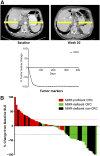Mismatch Repair Deficiency and Response to Immune Checkpoint Blockade
- PMID: 27412392
- PMCID: PMC5061538
- DOI: 10.1634/theoncologist.2016-0046
Mismatch Repair Deficiency and Response to Immune Checkpoint Blockade
Abstract
: More than 1.6 million new cases of cancer will be diagnosed in the U.S. in 2016, resulting in more than 500,000 deaths. Although chemotherapy has been the mainstay of treatment in advanced cancers, immunotherapy development, particularly with PD-1 inhibitors, has changed the face of treatment for a number of tumor types. One example is the subset of tumors characterized by mismatch repair deficiency and microsatellite instability that are highly sensitive to PD-1 blockade. Hereditary forms of cancer have been noted for more than a century, but the molecular changes underlying mismatch repair-deficient tumors and subsequent microsatellite unstable tumors was not known until the early 1990s. In this review article, we discuss the history and pathophysiology of mismatch repair, the process of testing for mismatch repair deficiency and microsatellite instability, and the role of immunotherapy in this subset of cancers.
Implications for practice: Mismatch repair deficiency has contributed to our understanding of carcinogenesis for the past 2 decades and now identifies a subgroup of traditionally chemotherapy-insensitive solid tumors as sensitive to PD-1 blockade. This article seeks to educate oncologists regarding the nature of mismatch repair deficiency, its impact in multiple tumor types, and its implications for predicting the responsiveness of solid tumors to immune checkpoint blockade.
Keywords: Colonic neoplasms; Colorectal neoplasms; DNA mismatch repair; Hereditary nonpolyposis; Immunotherapy; Microsatellite instability.
©AlphaMed Press.
Conflict of interest statement
of potential conflicts of interest may be found at the end of this article.
Figures





References
-
- Lynch HT, Snyder CL, Shaw TG, et al. Milestones of Lynch syndrome: 1895-2015. Nat Rev Cancer. 2015;15:181–194. - PubMed
-
- Aaltonen LA, Peltomäki P, Leach FS, et al. Clues to the pathogenesis of familial colorectal cancer. Science. 1993;260:812–816. - PubMed
-
- Ionov Y, Peinado MA, Malkhosyan S, et al. Ubiquitous somatic mutations in simple repeated sequences reveal a new mechanism for colonic carcinogenesis. Nature. 1993;363:558–561. - PubMed
Publication types
MeSH terms
Substances
LinkOut - more resources
Full Text Sources
Other Literature Sources
Molecular Biology Databases
Miscellaneous

